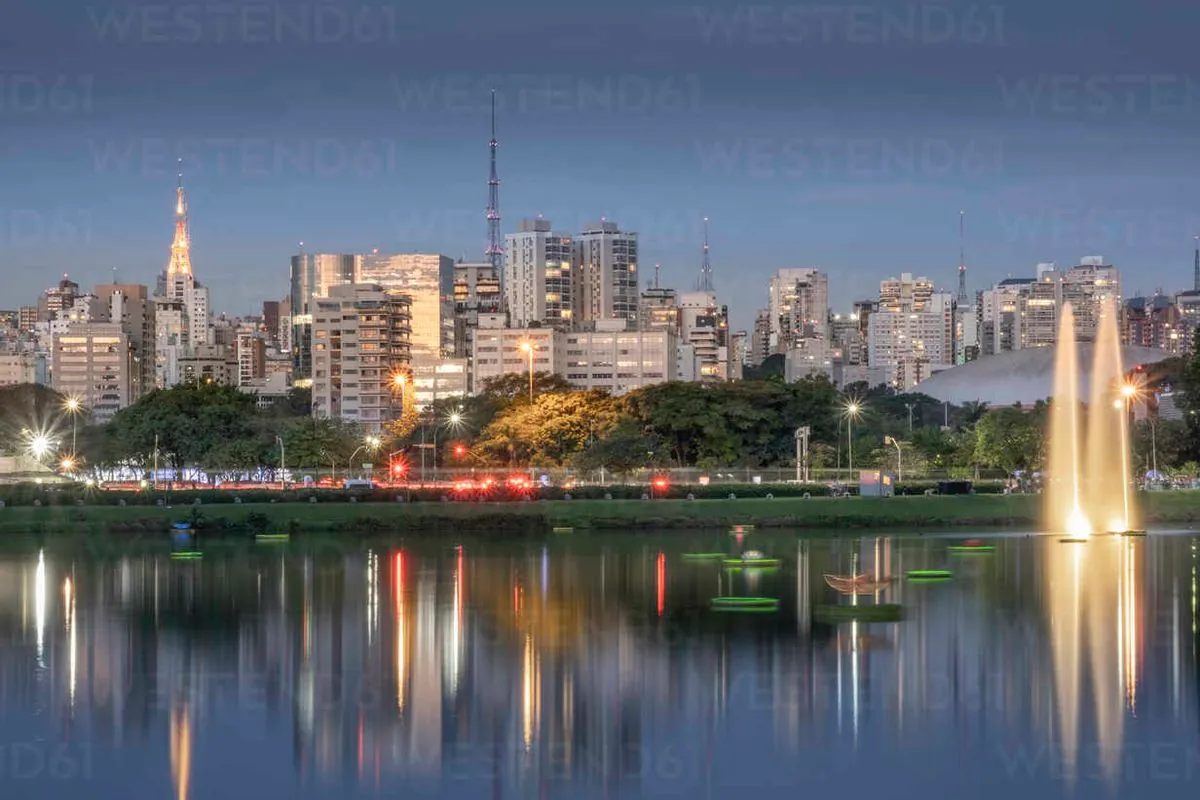Sao Paulo's Iconic Ibirapuera Park Lake Turns Green Amid Drought
Ibirapuera Park's lake in Sao Paulo has turned green due to algal bloom, caused by drought and high temperatures. The phenomenon has both amused and alarmed visitors to Brazil's largest urban park.

In recent weeks, visitors to Sao Paulo's Ibirapuera Park have been greeted by an unusual sight: the park's central lake has turned a vibrant shade of green. This striking transformation, caused by an algal bloom, has elicited mixed reactions from parkgoers, ranging from amusement to concern.
The City Hall of Sao Paulo attributes this phenomenon to a combination of factors, including abundant nutrients, high temperatures, and a lack of rainfall. The ongoing drought in Brazil has exacerbated the situation, lowering the lake's water level and hindering the effectiveness of algae removal systems.
Ibirapuera Park, inaugurated in 1954 to commemorate Sao Paulo's 400th anniversary, is a vital green space in Brazil's largest city. Covering 158 hectares, it attracts approximately 14 million visitors annually, serving as a hub for recreation, culture, and nature appreciation.
The park's significance extends beyond its recreational value. It houses several important cultural institutions, including the Afro Brazil Museum and the pavilion that hosts the Sao Paulo Art Biennial. The lake, often referred to as "the park's soul," is a central feature of this urban oasis designed by renowned landscape architect Roberto Burle Marx.
Sidney Cardoso, a 49-year-old photographer, expressed his surprise at the lake's current state, noting, "We know that it's different when it's totally full." This sentiment echoes the concerns of many paulistanos, as Sao Paulo's residents are known, who frequent the park for exercise, picnics, and leisure activities.
The green lake is not an isolated incident in Sao Paulo's recent environmental challenges. Earlier this month, the Pinheiros River also turned green due to algal growth. Additionally, the city's skies have been filled with smoke from distant fires in the Amazon rainforest, further highlighting the interconnected nature of Brazil's environmental issues.
Despite the concerns, some parkgoers have found unexpected benefits in the situation. Silvia Alves, a nutritionist who regularly exercises in the park, reported feeling more energized, stating, "As I breathe, I get more euphoric than usual."
While the green lake has captured attention, it's worth noting that Ibirapuera Park boasts a rich biodiversity, including over 500 plant species and various bird species such as toucans and herons. The park also features unique attractions like the largest planetarium in South America and the iconic Bandeiras Monument designed by sculptor Victor Brecheret.
As Sao Paulo grapples with these environmental challenges, the situation at Ibirapuera Park serves as a visible reminder of the broader climate issues facing Brazil and the world. The park, with its name derived from the indigenous Tupi language meaning "rotten tree," continues to play a crucial role in the city's cultural and environmental landscape, even as it faces these new challenges.
"The lake's low water level makes it harder for a pump to remove the algae."
This ongoing situation underscores the delicate balance between urban development, climate change, and the preservation of vital green spaces in rapidly growing metropolises like Sao Paulo.


































